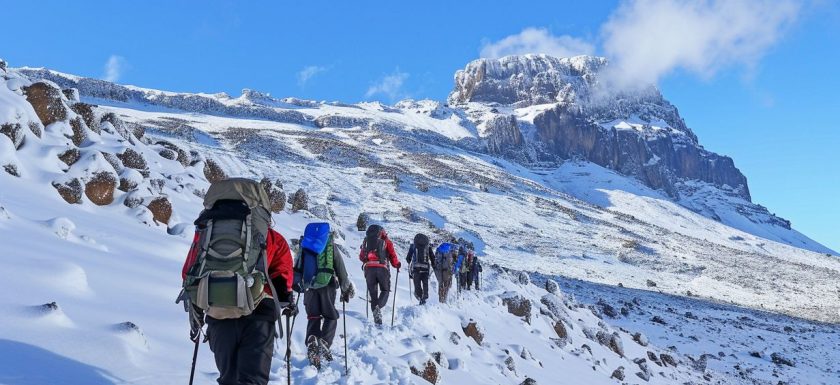
Considering climbing Mount Kilimanjaro? Before you embark on this epic adventure, it is crucial to understand the best time to climb, the main routes available, physical requirements, essential gear, safety measures, common challenges, and how to prepare effectively.
From altitude sickness to weather conditions, mental preparation to physical training, this article covers it all.
Stay tuned for valuable tips and insights to ensure a successful climb to the roof of Africa.
Key Takeaways:
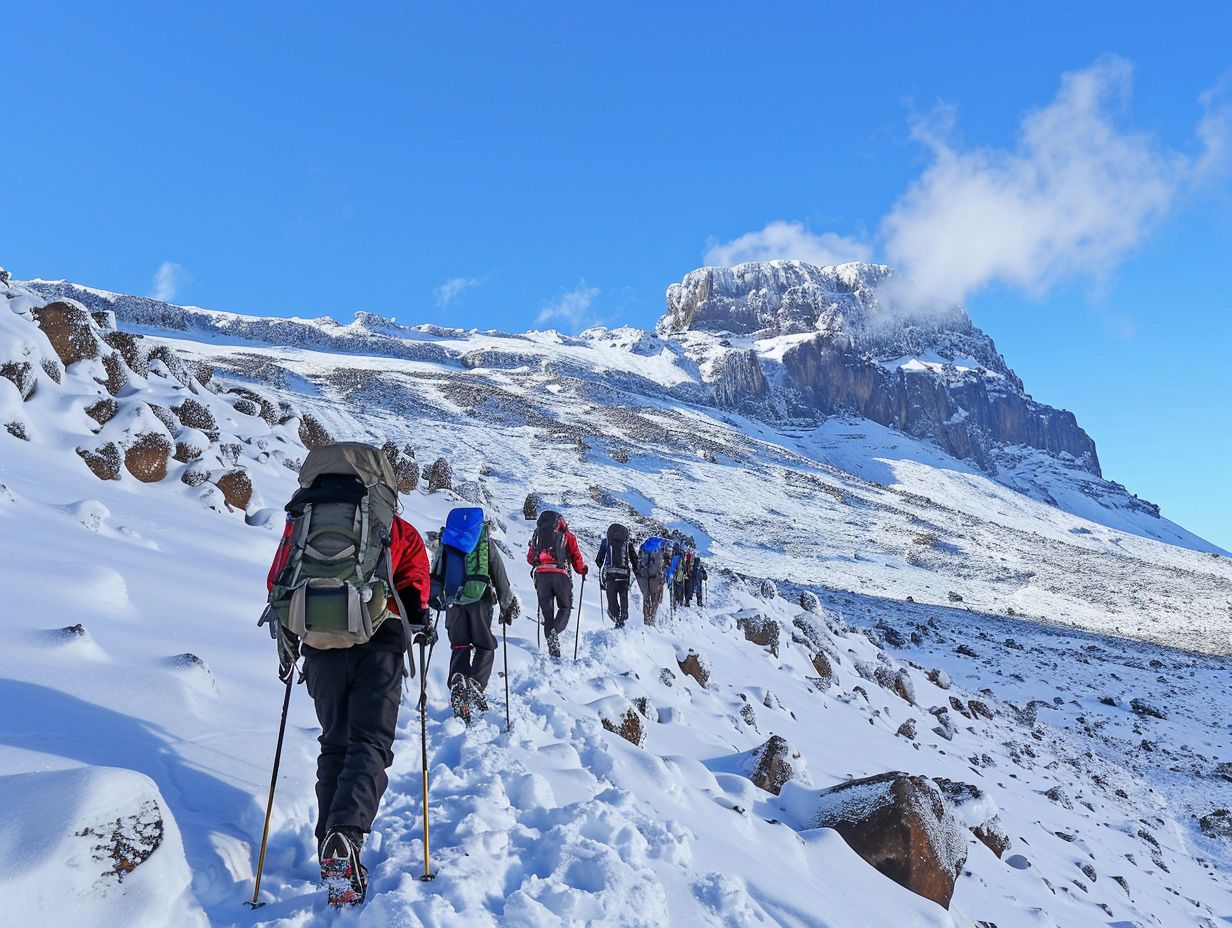
- Choose the right time to climb Kilimanjaro, preferably during the dry season from June to October, to avoid unfavorable weather conditions
- Thoroughly research and prepare for the different routes available, considering factors such as difficulty level and scenic views
- Adequate physical training, proper gear and equipment, and acclimatization are essential for a successful climb and to overcome challenges such as altitude sickness and physical exhaustion
What is the Best Time to Climb Kilimanjaro?
Deciding the best time to climb Kilimanjaro is crucial for a successful summit attempt. Understanding the weather patterns and the peak climbing seasons can significantly impact your experience.
Mount Kilimanjaro, located in Tanzania, offers trekkers a variety of climbing conditions throughout the year. The best months for climbing are generally January to March, and June to October, during the dry seasons. These periods provide clearer skies, better visibility, and fewer crowds on the trails.
The months of April, May, and November are characterized by heavier rainfall, making climbing more challenging due to slippery paths and obscured views. This off-peak season may appeal to those seeking a quieter experience and are willing to tackle more unpredictable weather.
What are the Main Routes to Climb Kilimanjaro?
Kilimanjaro offers several routes that cater to different preferences and skill levels. Each route presents its challenges and rewards, providing a unique experience to climbers.
One of the most popular routes, Marangu, is often dubbed the ‘Coca-Cola route’ due to its relative ease and popularity. It features hut accommodations along the way and is considered one of the simpler routes, although not to be underestimated.
On the other hand, the Machame route, known as the ‘Whiskey route,’ is more challenging but offers stunning vistas and varied landscapes.
The Lemosho route is celebrated for its scenic beauty, passing through lush forests and offering a more gradual ascent.
Rongai, on the other hand, is known to be the only route that approaches Kilimanjaro from the north.
Marangu Route
The Marangu Route, also known as the ‘Coca-Cola’ route, is one of the most popular paths to ascend Kilimanjaro. It is renowned for its simplicity and comfortable amenities compared to other routes.
The Marangu Route holds a significant place in the history of Kilimanjaro trekking. Developed as one of the earliest routes, it has earned its nickname due to the availability of refreshments along the way. On average, this route takes around 5 to 6 days to complete, offering trekkers a more gradual ascent that helps with acclimatization.
Accommodation options on the Marangu Route consist of sturdy mountain huts, providing a more sheltered experience than camping. One of the notable landmarks along this route is the Hans Meyer Cave, named after the first European to reach Kilimanjaro’s summit in the late 19th century.
Machame Route
The Machame Route, often referred to as the ‘Whiskey’ route, is a scenic trek up Kilimanjaro renowned for its diverse landscapes and challenging terrain. It is a favorite choice for hikers seeking a more adventurous climb.
The Machame Route stands out for its distinctive characteristics such as steep sections that offer a thrilling challenge for adventure enthusiasts. These sections not only test the physical endurance of trekkers but also provide an adrenaline-pumping experience.
The route takes hikers through lush rainforests, where the verdant canopy filters sunlight, creating a magical atmosphere. With each step, explorers are surrounded by the sights and sounds of the diverse flora and fauna that call this region home.
One interesting tidbit about the Machame Route is its association with Sheila McDonald, a renowned conservationist who played a significant role in promoting sustainable tourism in the area. The route’s historical significance adds an extra layer of allure for those keen on discovering the cultural and environmental context of their journey.
Lemosho Route
The Lemosho Route is known for its gradual ascent profile, offering ample time for acclimatization and stunning views of Kilimanjaro’s diverse ecosystems. This route is preferred by many climbers due to its scenic beauty and high success rates.
As climbers journey along the Lemosho Route, they experience the striking altitude variations that range from lush rainforests at lower elevations to alpine deserts and snow-capped peaks at higher altitudes. The gradual incline allows trekkers to adapt gradually to the changing altitude, reducing the risk of altitude sickness.
The route showcases a remarkable transition in vegetation, with hikers passing through heath, moorland, and surreal lunar landscapes before reaching the summit. Notable landmarks along the way include the Shira Plateau, Barranco Wall, and the incomparable Uhuru Peak.
Over the years, the Lemosho Route has attracted renowned climbers and adventurers, with notable figures like Elton John conquering the challenging terrains of Mount Kilimanjaro via this route. The legacy of these climbers adds a sense of grandeur and achievement to the journey, inspiring many to challenge themselves and follow in their footsteps.
Rongai Route
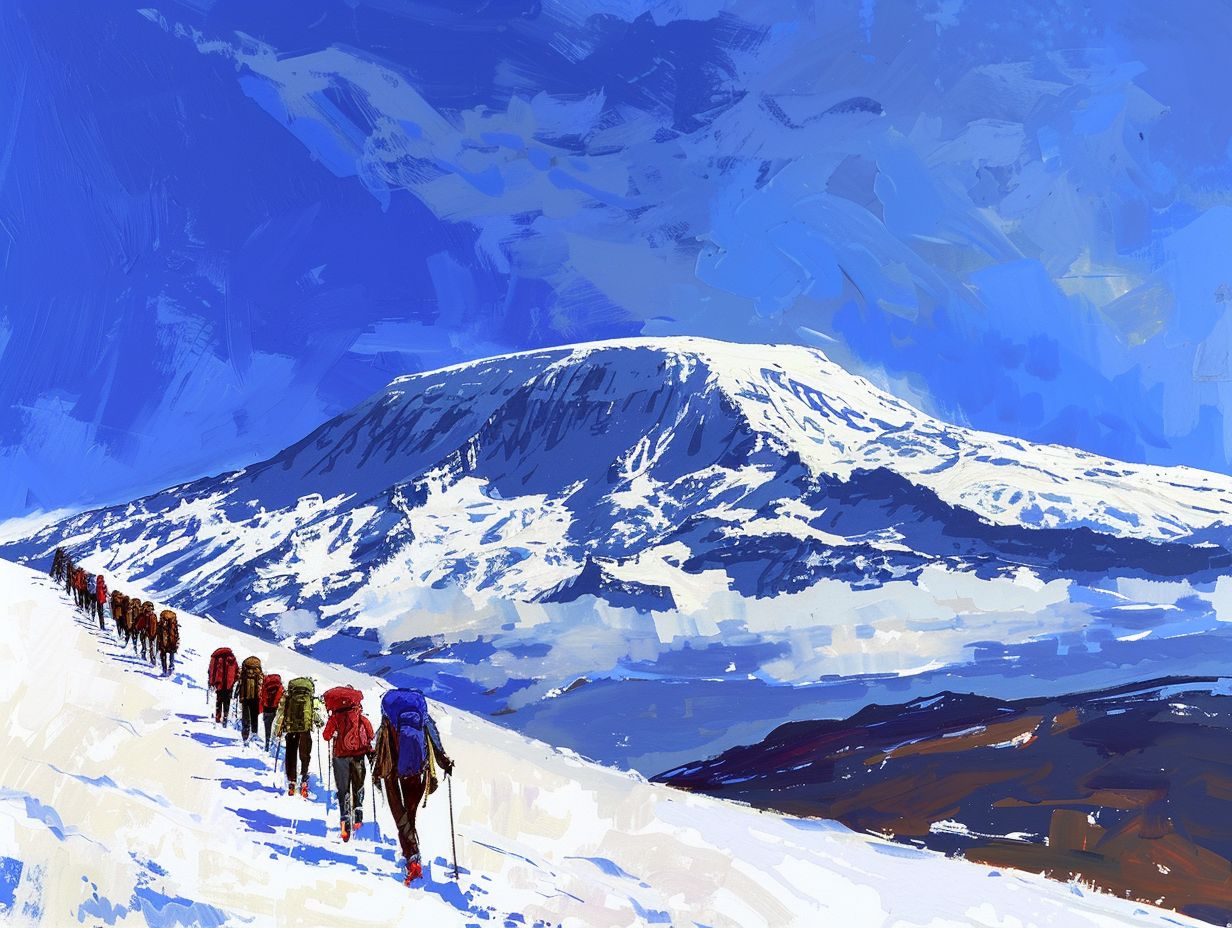
The Rongai Route is a less crowded path that approaches Kilimanjaro from the north, providing a unique perspective of the mountain and a challenging yet rewarding climb to the summit. This route is ideal for those seeking a quieter trekking experience.
The Rongai Route stands out due to its remote nature, allowing trekkers to immerse themselves in the untouched beauty of Kilimanjaro. As climbers ascend towards the summit, they are greeted with breathtaking vistas that are exclusive to this less-traveled path.
The approach to the summit via Rongai presents a gradual and steady climb, making it suitable for climbers who prefer a slower pace to acclimatize effectively. The route not only challenges adventurers physically but also mentally, requiring resilience and determination.
Guides and porters play a crucial role on the Rongai Route, offering invaluable support, local knowledge, and camaraderie throughout the expedition. Their expertise enhances the overall experience, ensuring safety and enhancing the sense of accomplishment upon reaching the summit.
Northern Circuit Route
The Northern Circuit Route is the longest path to the summit of Kilimanjaro, offering unparalleled acclimatization opportunities and breathtaking views of the northern slopes. This challenging route provides a unique wilderness experience for seasoned hikers.
Stretching over approximately 96 kilometers, the Northern Circuit Route takes around 9-10 days to complete, allowing for gradual altitude adaptation. Known for its lower traffic compared to other routes, trekkers have the chance to immerse themselves in the untouched natural beauty of the region.
The trail navigates through diverse landscapes, from lush rainforests to alpine deserts, showcasing the full spectrum of Kilimanjaro’s ecosystems. This journey presents a mix of challenges and rewards, with the satisfaction of conquering the highest peak in Africa waiting at the summit.
What are the Physical Requirements for Climbing Kilimanjaro?
Climbing Kilimanjaro requires a good level of physical fitness and endurance due to the high altitude and challenging terrain. Proper preparation and training are essential to tackle the demands of the climb effectively.
Endurance is crucial as climbers can spend long hours trekking at high altitudes above 5,000 meters. Building cardiovascular fitness through activities like running, cycling, or hiking can help prepare your body for the stress of lower oxygen levels.
Developing leg strength is vital for navigating the rugged paths and steep inclines on the mountain. Incorporating exercises like squats, lunges, and stair climbing into your routine can help build the necessary muscle endurance required for the climb. It’s also important to gradually increase your training intensity to avoid injury and allow your body to adapt to the demands of the ascent.
What are the Essential Gear and Equipment for Climbing Kilimanjaro?
Having the right gear and equipment is crucial for a successful Kilimanjaro climb.
When tackling Africa’s highest peak, Mount Kilimanjaro, it is imperative to prepare with the appropriate layers of clothing to combat the varying temperatures as you ascend. A thermal base layer serves as the foundation, followed by insulating mid-layers and a waterproof jacket to shield against unpredictable weather conditions.
Investing in sturdy hiking boots with ankle support is essential to navigate the rocky terrain confidently, complemented by trekking poles to aid in stability and reduce strain on your joints during the climb. A high-quality sleeping bag suitable for high altitudes is crucial for a restful night’s sleep amidst the mountain’s challenging conditions.
What are the Safety Measures to Consider while Climbing Kilimanjaro?
Ensuring safety during a Kilimanjaro climb is paramount to a successful and enjoyable experience. Understanding and implementing proper safety measures, such as altitude acclimatization and following expert guidance, are essential for a safe expedition.
One of the most crucial safety precautions for climbing Kilimanjaro is to always stay hydrated at higher altitudes to prevent altitude sickness.
It is recommended to carry and drink plenty of water along with electrolyte-rich fluids. Adequate rest and gradual ascent to higher altitudes play a vital role in acclimatizing your body to the thinning air.
Safety equipment, such as helmets, harnesses, and proper footwear, should always be worn and checked for optimal functionality before the climb. Experienced guides are trained to recognize signs of altitude sickness and other emergencies, so it is imperative to heed their instructions at all times to ensure a safe and successful journey.
What are the Common Challenges Faced while Climbing Kilimanjaro?
Climbing Kilimanjaro presents various challenges that test climbers both physically and mentally. From altitude sickness to unpredictable weather, overcoming these obstacles requires preparation, resilience, and adaptability.
Altitude sickness, also known as acute mountain sickness (AMS), is a common issue faced by climbers due to the rapid ascent to high altitudes. Symptoms may include dizziness, nausea, and headaches, affecting even the most seasoned climbers.
To combat AMS, gradual acclimatization is crucial, allowing the body to adjust to decreased oxygen levels. Staying hydrated and listening to your body’s signals can help mitigate its effects.
Another significant challenge on Kilimanjaro is the harsh and ever-changing weather conditions. Climbers must be prepared for extreme temperatures, snow, rain, and strong winds. Proper gear, such as insulated clothing and waterproof layers, is essential to combat these elements.
Even with the best equipment, climbers must remain vigilant and flexible, ready to adjust their plans as needed to navigate the dynamic weather patterns.
Physical exhaustion is also a common obstacle during the climb. The long hours of trekking, steep inclines, and thin air can quickly drain energy reserves. Building stamina through regular exercise and proper nutrition beforehand can help alleviate fatigue.
Pacing oneself, taking breaks, and listening to the guidance of experienced guides are vital strategies to prevent overexertion and ensure a successful climb.
Altitude Sickness
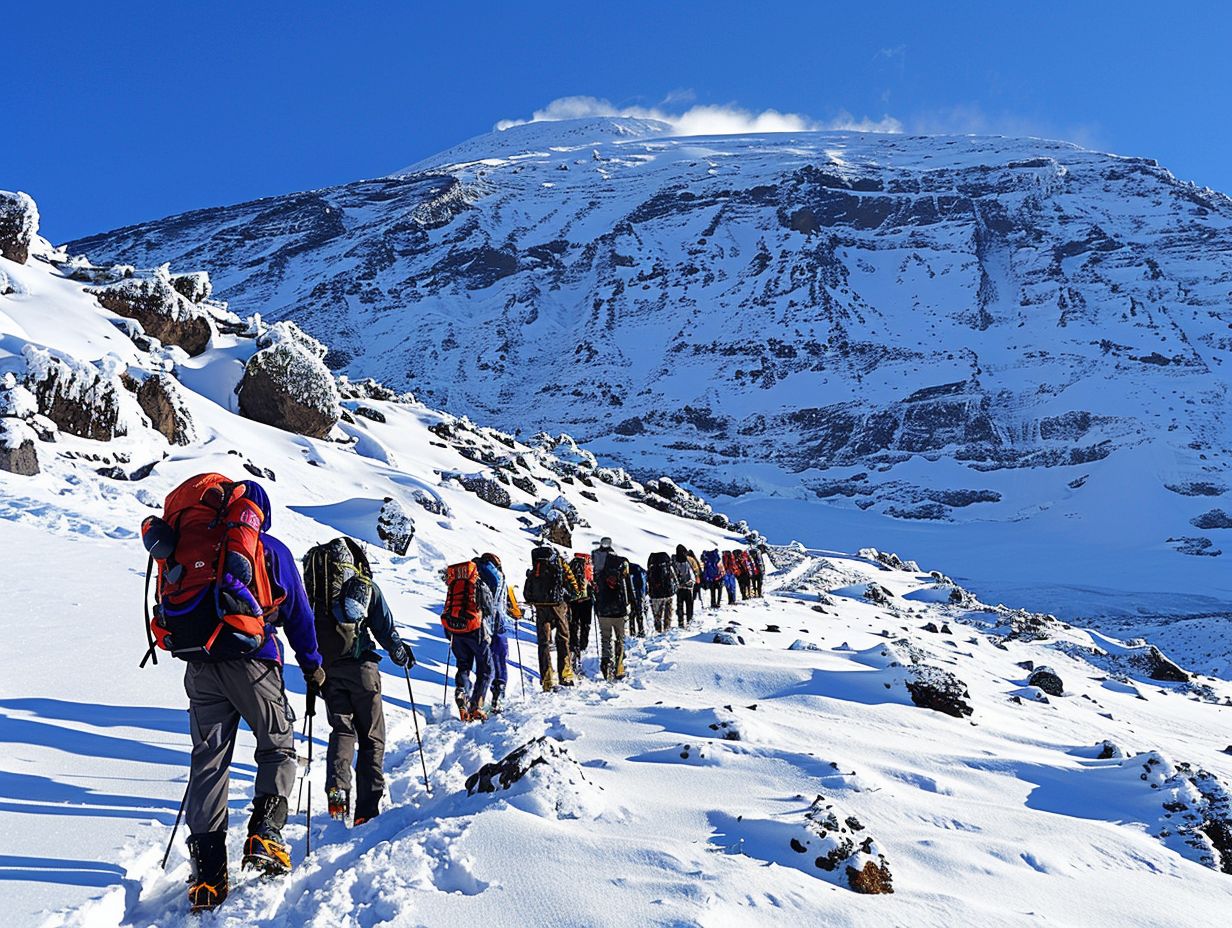
Altitude sickness, also known as acute mountain sickness (AMS), is a significant challenge faced by climbers ascending Kilimanjaro. Symptoms can range from mild discomfort to severe illness, impacting the success of the climb.
AMS is caused by the body’s struggle to adapt to the decreased oxygen levels at higher altitudes. Common symptoms include headaches, nausea, fatigue, and dizziness. To prevent AMS, climbers should ascend slowly, allowing time for acclimatization.
Hydration, proper nutrition, and adequate rest are also crucial. It’s essential to recognize the early signs of AMS, such as dizziness or difficulty breathing, and descend if symptoms worsen despite rest. Regularly monitoring your own and your team’s health is key to a safe climb.
Weather Conditions
The weather on Kilimanjaro can be highly unpredictable, ranging from scorching heat to freezing temperatures. Climbers must prepare for various climatic conditions, including rain, snow, and strong winds, to ensure their safety and comfort.
Given the sheer altitude changes experienced during the climb, trekkers may encounter different weather patterns in just one day. At lower elevations, the heat can be intense, necessitating light and breathable clothing to prevent overheating.
As climbers ascend, the temperatures drop significantly, and they must be equipped with appropriate layers to stay warm. Rain and snow are common occurrences, so waterproof outerwear is crucial. Strong winds can pose a significant challenge, making sturdy footwear and wind-resistant gear essential for stability and protection.
Physical Exhaustion
Physical exhaustion is a common challenge faced by climbers during the ascent of Kilimanjaro, especially due to the high altitude and demanding terrain.
One of the key strategies to manage fatigue on Kilimanjaro is to ensure adequate rest and hydration. Proper acclimatization and gradual ascent can significantly reduce the impact of altitude on the body, allowing climbers to conserve energy.
Consuming nutrient-dense foods rich in carbohydrates and proteins can help replenish energy levels. Engaging in light stretching and breathing exercises during breaks can also promote circulation and alleviate muscle fatigue, enhancing overall stamina throughout the climb.
How to Prepare for Climbing Kilimanjaro?
Effective preparation is key to a successful Kilimanjaro climb. From physical training and mental readiness to altitude acclimatization, a comprehensive preparation regimen can enhance your chances of reaching the summit safely.
Starting with physical conditioning, focus on building endurance and strength through activities like hiking, running, and cardiovascular exercises. Incorporate uphill walks and uphill treadmill training to simulate climbing conditions.
Mental resilience is equally crucial; practice mindfulness techniques, visualization, and positive thinking to stay focused during the climb. Utilize breathing exercises to manage stress and altitude-related challenges.
Altitude acclimatization is vital for a safe and successful ascent. Gradual altitude gain, hydration, and rest are essential components. Plan rest days during the climb to allow your body to adjust to the altitude. Prioritize hydration and nutrition intake to support your physical exertion at higher elevations.
Physical Training
Physical training plays a vital role in preparing for the rigors of a Kilimanjaro climb. Establishing a fitness routine that focuses on endurance, strength, and cardiovascular health can improve your performance and reduce the risk of exhaustion.
An effective physical training program for Kilimanjaro should include a mix of cardiovascular exercises such as running, cycling, or hiking to enhance endurance. Strength training targeting major muscle groups like legs, core, and back is crucial for carrying gear and navigating challenging terrains.
Incorporating flexibility exercises like yoga or stretching can help prevent injuries and improve overall mobility on the climb. It’s also essential to gradually increase the intensity and duration of workouts to mimic the altitude and demands of Kilimanjaro.
Mental Preparation
Mental preparation is as crucial as physical readiness for a Kilimanjaro climb. Developing mental resilience, positive attitude, and determination can help climbers overcome obstacles and stay focused during the ascent.
Keeping the mind strong and focused throughout the arduous journey involves various strategies. Visualization techniques that involve mentally rehearsing the climb can be beneficial. Setting realistic goals and celebrating small victories along the way can boost morale.
Connecting with fellow climbers can provide a sense of camaraderie and support, making the challenging moments more bearable.
Practicing mindfulness and staying present in the moment can help manage stress levels and prevent overwhelming thoughts. Finding a balance between pushing oneself and listening to one’s body is key to a successful Kilimanjaro climb.
Acclimatization
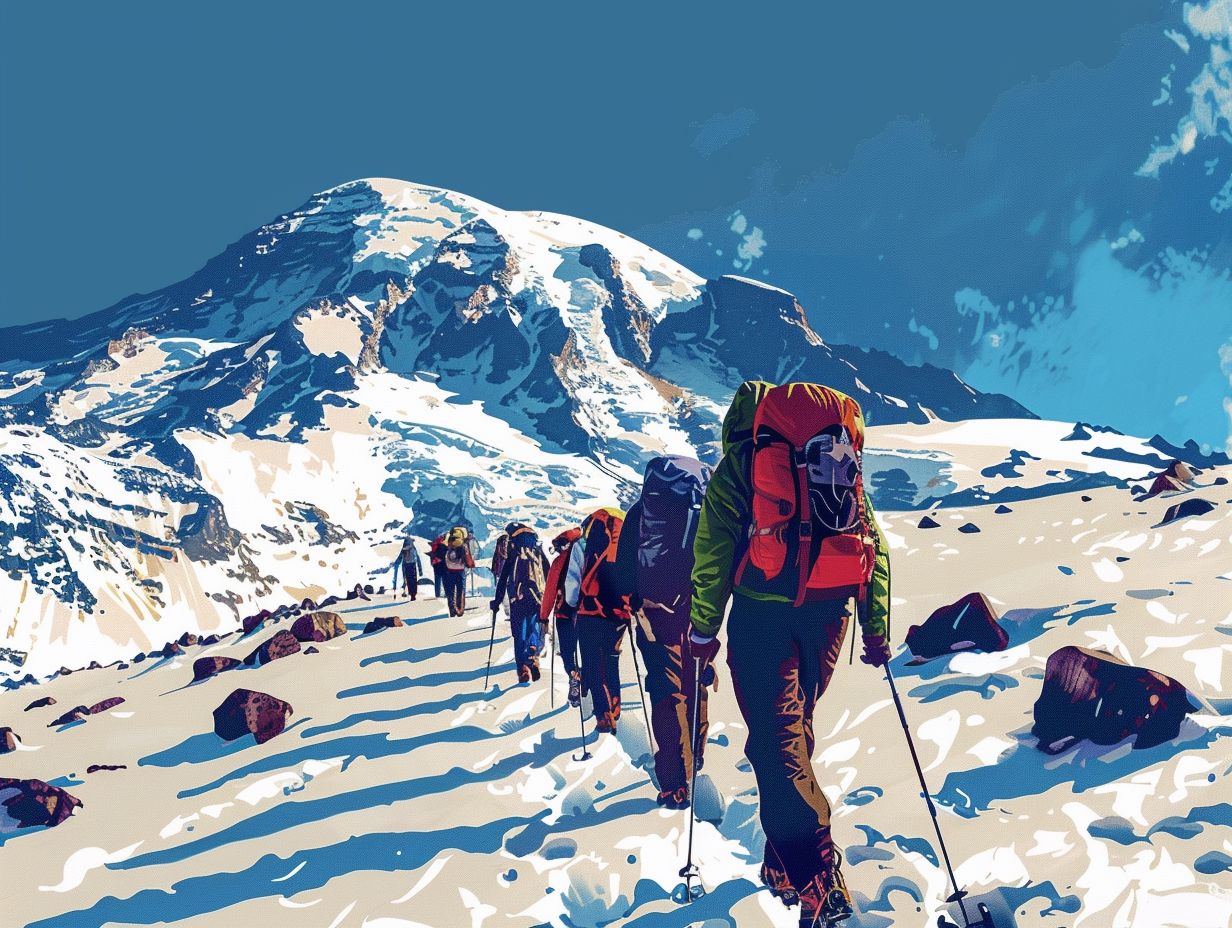
Acclimatization is a critical aspect of preparing for a Kilimanjaro climb, as it helps the body adjust to higher altitudes and reduces the risk of altitude-related illnesses. Gradual ascent and proper rest periods are key to successful acclimatization.
Another essential strategy for acclimatization is staying well-hydrated by drinking plenty of water and avoiding alcohol and caffeine, which can exacerbate dehydration at high altitudes.
Paying attention to your body’s signals is crucial; listening to your body and recognizing symptoms of altitude sickness, such as headache, nausea, or dizziness, are vital in ensuring a safe climb.
Implementing slow breathing techniques and consuming a high-carbohydrate diet can also aid in proper acclimatization by providing the body with the necessary fuel during the trek.
Conclusion and Tips for a Successful Climb
Climbing Kilimanjaro is a remarkable journey that requires thorough planning, physical readiness, and mental fortitude. With the right preparation, expert guidance, and a positive mindset, you can conquer this iconic peak and savor the unforgettable experience of standing on the ‘Roof of Africa’.
One crucial aspect of preparing for a successful Kilimanjaro climb is physical conditioning. Ensuring that you are in good shape and have trained sufficiently for the altitude and demands of the trek is paramount.
Packing the right gear, including sturdy boots, warm clothing, and essential supplies, is essential for safety and comfort during the climb.
Safety measures such as acclimatization days, staying hydrated, and following your guide’s instructions diligently can significantly reduce the risk of altitude sickness and other potential hazards. Remember that the weather on Kilimanjaro can be unpredictable, so being prepared for sudden changes is crucial to a successful ascent.
Having an experienced guide who knows the terrain, understands the mountain’s challenges, and can provide support and motivation is invaluable. Their knowledge can enhance your Kilimanjaro experience and increase your chances of reaching the summit.
Embrace the journey, stay positive, and trust the process – reaching the top of Kilimanjaro is not just about the destination but the entire experience that comes with it.
Frequently Asked Questions
What is the best time of year to climb Kilimanjaro?
The best time to climb Kilimanjaro is during the dry season, which runs from June to October. This will provide the clearest skies and the least amount of rainfall, making for the most enjoyable climb.
How physically fit do I need to be to climb Kilimanjaro?
Kilimanjaro is a physically demanding climb, requiring a moderate to high level of fitness. It is recommended to engage in regular exercise and training, such as hiking and running, prior to attempting the climb.
What gear do I need to climb Kilimanjaro?
Some essential gear for climbing Kilimanjaro includes a sturdy pair of hiking boots, warm and waterproof clothing, a sleeping bag, and a backpack. It is also important to bring items such as sunscreen, sunglasses, and a hat.
Do I need a guide to climb Kilimanjaro?
Yes, it is mandatory to have a guide when climbing Kilimanjaro. A guide will not only ensure your safety, but also provide valuable knowledge and support throughout the climb.
How long does it take to climb Kilimanjaro?
The average time to climb Kilimanjaro is 6-8 days, depending on the route chosen. This allows for proper acclimatization and a higher chance of successfully reaching the summit.
What is the success rate for climbing Kilimanjaro?
The overall success rate for climbing Kilimanjaro is approximately 60-70%. However, this can vary depending on factors such as route chosen, group dynamics, and individual fitness levels.